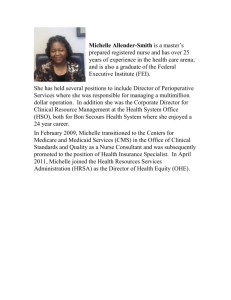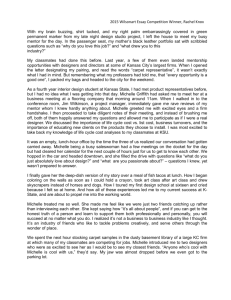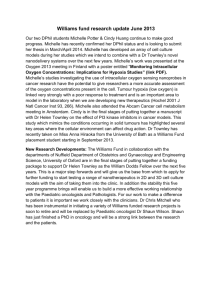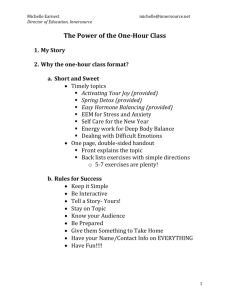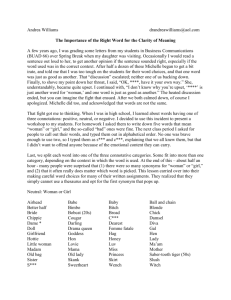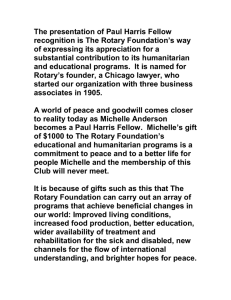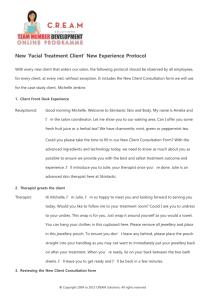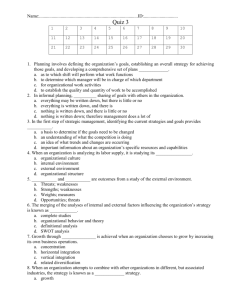Choosing a Child - Stevens Institute of Technology
advertisement
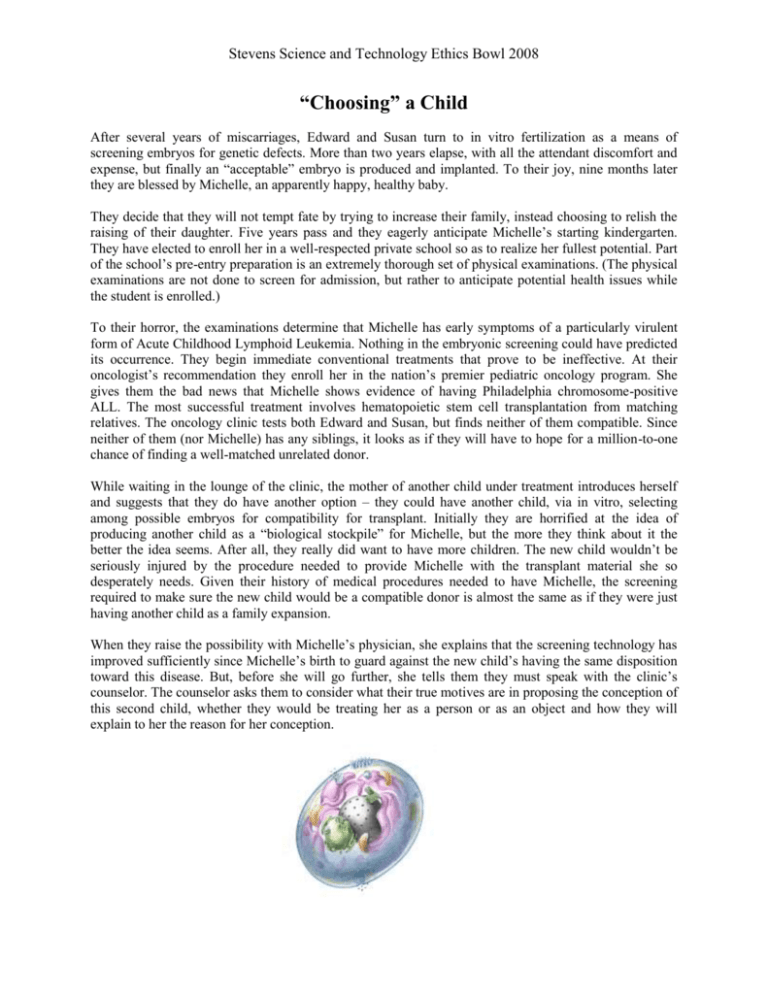
Stevens Science and Technology Ethics Bowl 2008 “Choosing” a Child After several years of miscarriages, Edward and Susan turn to in vitro fertilization as a means of screening embryos for genetic defects. More than two years elapse, with all the attendant discomfort and expense, but finally an “acceptable” embryo is produced and implanted. To their joy, nine months later they are blessed by Michelle, an apparently happy, healthy baby. They decide that they will not tempt fate by trying to increase their family, instead choosing to relish the raising of their daughter. Five years pass and they eagerly anticipate Michelle’s starting kindergarten. They have elected to enroll her in a well-respected private school so as to realize her fullest potential. Part of the school’s pre-entry preparation is an extremely thorough set of physical examinations. (The physical examinations are not done to screen for admission, but rather to anticipate potential health issues while the student is enrolled.) To their horror, the examinations determine that Michelle has early symptoms of a particularly virulent form of Acute Childhood Lymphoid Leukemia. Nothing in the embryonic screening could have predicted its occurrence. They begin immediate conventional treatments that prove to be ineffective. At their oncologist’s recommendation they enroll her in the nation’s premier pediatric oncology program. She gives them the bad news that Michelle shows evidence of having Philadelphia chromosome-positive ALL. The most successful treatment involves hematopoietic stem cell transplantation from matching relatives. The oncology clinic tests both Edward and Susan, but finds neither of them compatible. Since neither of them (nor Michelle) has any siblings, it looks as if they will have to hope for a million-to-one chance of finding a well-matched unrelated donor. While waiting in the lounge of the clinic, the mother of another child under treatment introduces herself and suggests that they do have another option – they could have another child, via in vitro, selecting among possible embryos for compatibility for transplant. Initially they are horrified at the idea of producing another child as a “biological stockpile” for Michelle, but the more they think about it the better the idea seems. After all, they really did want to have more children. The new child wouldn’t be seriously injured by the procedure needed to provide Michelle with the transplant material she so desperately needs. Given their history of medical procedures needed to have Michelle, the screening required to make sure the new child would be a compatible donor is almost the same as if they were just having another child as a family expansion. When they raise the possibility with Michelle’s physician, she explains that the screening technology has improved sufficiently since Michelle’s birth to guard against the new child’s having the same disposition toward this disease. But, before she will go further, she tells them they must speak with the clinic’s counselor. The counselor asks them to consider what their true motives are in proposing the conception of this second child, whether they would be treating her as a person or as an object and how they will explain to her the reason for her conception.
